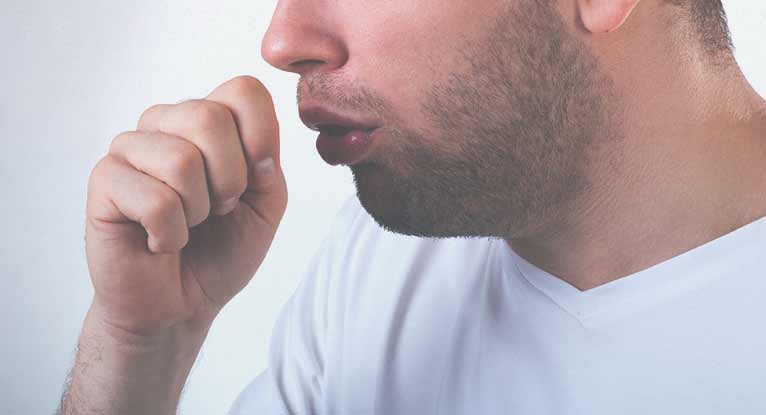Walking pneumonia is a mild case of pneumonia, often called atypical pneumonia. Pneumonia is a lung infection caused by viruses, bacteria, fungi or other infectious agents as well as chemicals, inhaled food, etc. Walking pneumonia is mostly caused by a bacterial infection with Mycoplasma pneumonia. People suffering from it often continue their daily activities and go to work just like they have a common cold.

What Are the Symptoms of Walking Pneumonia?
In cases of walking pneumonia, the signs and symptoms don’t become noticeable immediately after being exposed to the causative agent. In such cases, it will take about 14 days and up to 21 days for the symptoms to become noticeable. Once the symptoms start, it will take about another 4 days before they reach their peak. Some common symptoms include:
- A runny and stuffy nose
- A sore throat
- Constant coughing
- A cough that is accompanied by little mucus secretion
- Chest pain
- Chills
- Low-grade fever
- Loss of appetite
- Tiredness
- Lethargy
- Enlarged lymph nodes
- Skin rash
- Anemia
- Diarrhea
- Ear infection
Can Walking Pneumonia Symptoms Get Worse?
Yes, symptoms of walking pneumonia can get worse when the condition is not suspected and treated as it should. Not knowing about it in the first place just prolongs the period of being sick and delays the necessary treatment.
You need to contact your doctor immediately if your symptoms tend to get worse or if new symptoms show up which you did not have them before. You have probably developed another type of infection or pneumonia which is more serious, of course.
It is good to know that even though walking pneumonia does not often require treatment, other types of infections and serious types of pneumonia do require treatment, so seek professional medical help as soon as possible.
Is Walking Pneumonia Contagious?
Yes, walking pneumonia is contagious and it can spread from one person to the other. The infection is airborne. Just being close to a person suffering from walking pneumonia increases the risk of getting infected too. People who are in a close contact with a person diagnosed with walking pneumonia should be very careful and avoid any direct contact with the person or sharing the same personal things.
How Is Walking Pneumonia Diagnosed?
Sometimes a walking pneumonia is not diagnosed at all, as people don’t seek medical help and think they are just having a bad common cold or flu. However, if you are concerned about your own symptoms of walking pneumonia, seeking professional medical help your doctor diagnose walking pneumonia based on your anamnesis, medical history, and physical examination.
Listening to your chests with a stethoscope is a part of the physical examination needed for your doctor to determine any changes in your breathing sounds. Your doctor might also order a blood test as well as an X-ray of the chest. There is a blood test which can identify the presence of Mycoplasma pneumonia, but the test is seldom performed unless there is widespread of this infection in the community.
How Is Walking Pneumonia Treated?
Taking a good care of yourself when diagnosed with a walking pneumonia is necessary. In cases of a high fever, taking antipyretic drugs is recommended. Medications recommended for this purpose are ibuprofen, acetaminophen, aspirin, etc. Be careful with aspirin as it is not recommended for children under the age of 18 years old, due a serious possible complication known as Reye’s syndrome.
Drink plenty of fluids during the day and get yourself good hydrated. Get a lot of rest as well. Don’t take any cough medications before talking with your doctor first as they can just make it harder for your body to eliminate the sputum.
Antibiotics are often needed when treating symptoms of walking pneumonia. Make sure to take the antibiotics just as prescribed by your doctor. Don’t stop the medications before you finish the whole course as pneumonia can get back again.
In cases of a serious lung infection, hospitalization might be needed where the antibiotics are given intravenously. Sometimes, even oxygen is needed.
Home Remedies
There are many at-home remedies which can help you treat walking pneumonia. These natural remedies work in the same way as antibiotics, but they just don’t have any possible side effects.
- Mix one tablespoon of ginger juice and honey. Drink this mixture two or three times a day in order to eliminate the bacterial infection from your respiratory system.
- Make a paste with certain spices such as garlic, ginger, black pepper and chili pepper. Apply this paste directly on the chest in order to help speed up the recovery of your respiratory system.
- Make a tonic by boiling two cups of water and adding sesame seeds in it. Add linseed, salt, and honey. Drink this tonic regularly in order to eliminate the mucus from your respiratory system.
- Drink juices made from fresh vegetables such as spinach juice, cucumber juice, beet juice, etc.
- Drink herbal teas. Prepare herbal tea with fenugreek leaves or seeds. You can add some drops of lemon juice for a better taste as well.
- Consume foods which are rich in vitamins C and A so you can boost the immune system. These vitamins will strengthen the inner lining of the respiratory system, speeding up the recovery and preventing pneumonia from reoccurring.
